As summer wanes special plants start to bloom like the incredible rare and beautiful Empress of Brazil. Late summer gardens are lush with growth and heady with fragrance.
Eat out to make the most of the evening perfumes of frangipani, brugmansia and night-flowering jasmine.
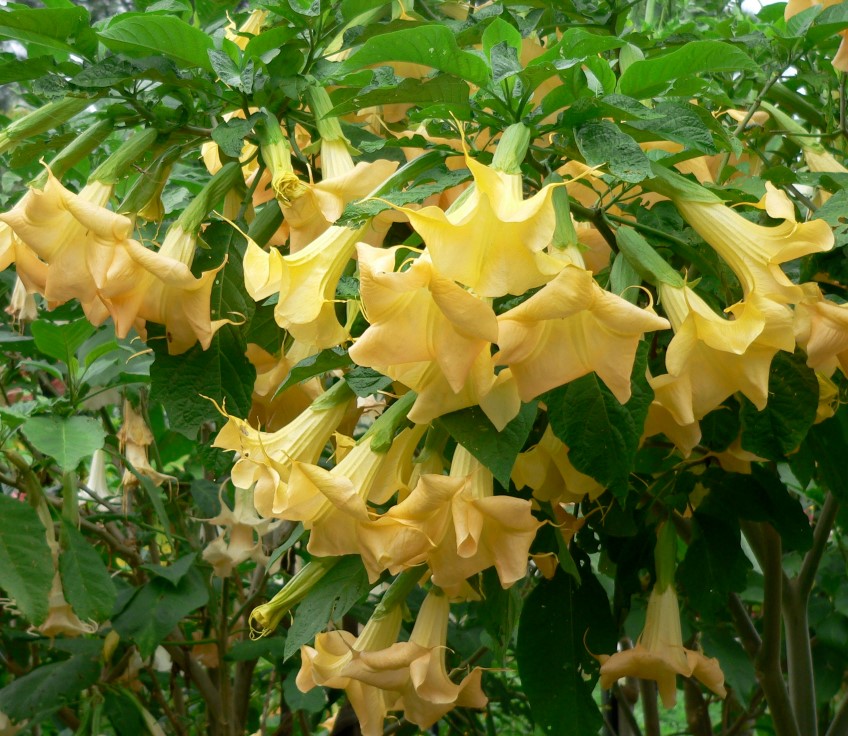
Like most Brugmansia, 'Butter Bomb', pictured here, never stops flowering.
It’s time to… February
Admire
Pink Belladonna Lilies on dark stems send light fragrance into the air.
Ligularia shines with spires of yellow flowers atop jagged green leaves.
See if you can spot the tubular white-tipped red flowers of Epacris on morning walks near the bush.
Prune
Tidy up Geraniums, trim, shorten and pot up those prunings to make new plants.
Clear up spent summer annuals.
Keep deadheading your roses to encourage more autumn blooms.
Prune spent Lavender flowers and take the foliage back by one third to prevent woodiness down below.
In the Bush Garden:
Ivory Curl tree or Buckinghamia is flowering right now all accross Sydney, and don't we know it! you can see them ligning the streets, particularly in
the hills suburbs, absolutely covered in corn-cob sized yellow blossom flowers full of bees.
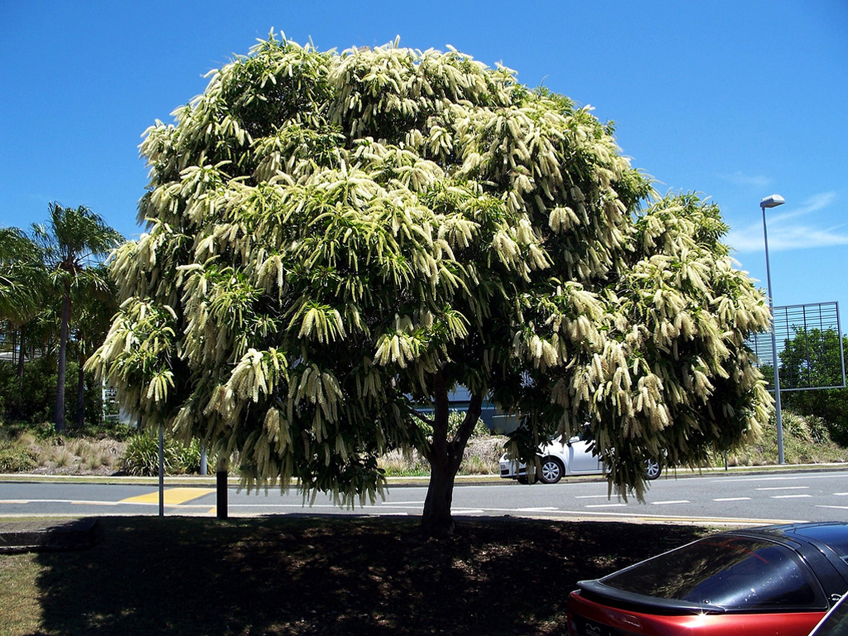
Bug watch
Birds on fruit trees !!! Be vigilant. Bird netting is the best protection. I saw fruit trees – both quince and figs – were netted at Mickey Robertson’s
Glenmore House.
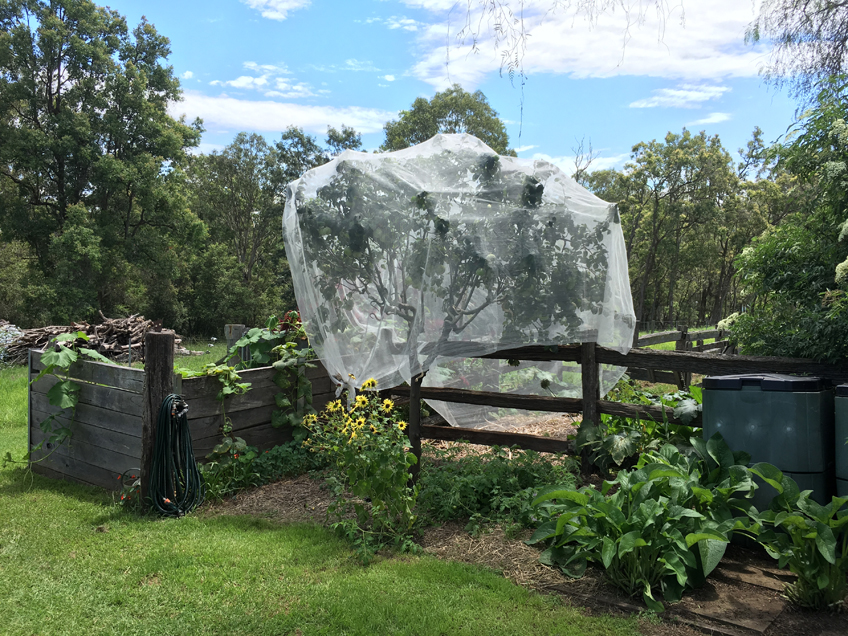
Quince tree netted at Glenmore House
In the Veggie Patch:
Zucchini Flowers are plentiful at this time of year. Linda has been picking armfuls of especially the female ones with the small fruit attached and stuffing
them with as many cheeses as she can fit in, placing them on a baking tray with a drizzle of olive oil, it’s just a bit healthier than batter and deep
frying, don’t you think?
Zucchini plants grow like triffids in this weather, I like to give them their own garden and near a pathway for them to ramble down is a good idea too,
gets them off the wet soil and stops them rotting.
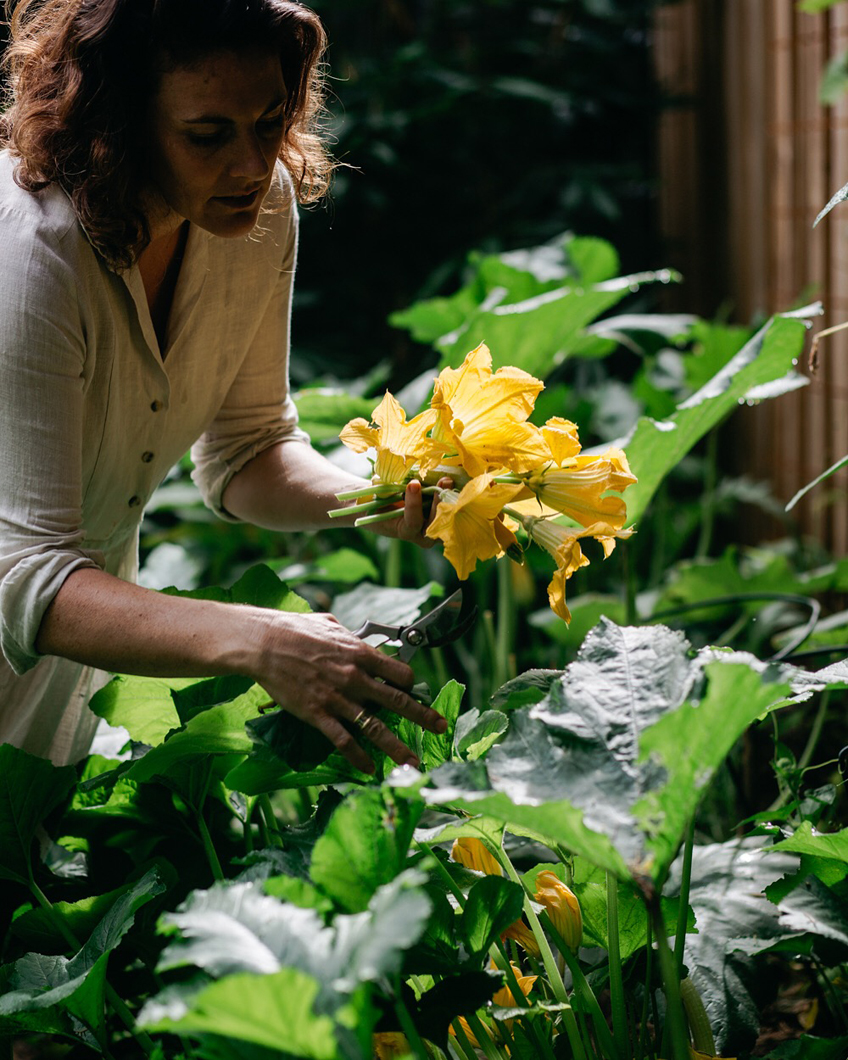
Linda picking zucchini flowers. Photo - Luisa Brimble
Garden Tours: Lavender Harvest Tassie
The lavender harvest is finished now but we saw some amazing hillsides of lavender this year during January. Bridestowe is a definite must see during harvest
time. We just love Tassie in January. If you would like to join Libby on the tour in 2017 go to rosstours.com.
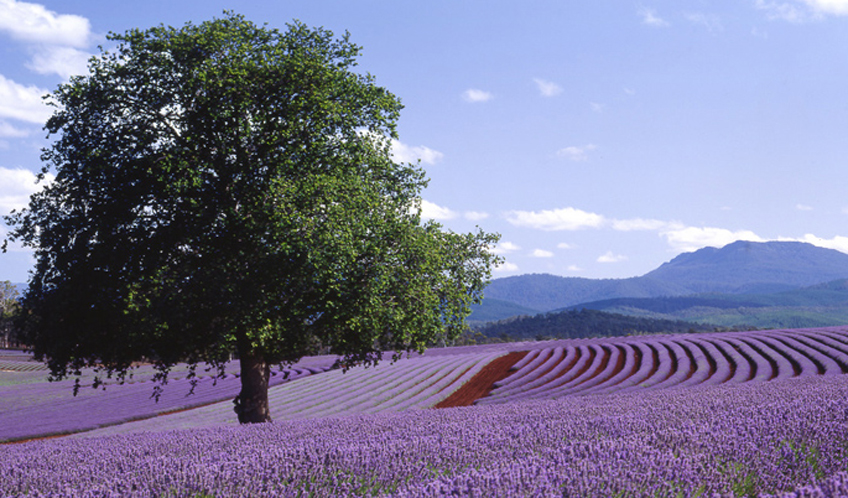
Bridestowe Lavender Farm in Tasmania
This Week:
Empress of Brazil
The rare blue hippeastrum (Worsleya procera) also known as the Empress of Brazil seems to have captured everyone’s imagination this week as they start
to flower late summer. Lots of you are keen for more growing tips. Firstly it's found growing naturally on just a few granite hillsides in Brazil where
it's kept moist by the spray from waterfalls.
The trick is to use a very free-draining potting mix. Some growers use pumice, but you can make your own blend with potting mix mixed with a few handfulsof coarse river sand and pea gravel. Keep the plant in a sunny location with afternoon light and water twice a week. During very wet weather, move the plant undercover as it’s susceptible to rot. Look out for crinum caterpillar (crush or spray with Success) and for rot at the basal plate, particularly when the plant bificates (forks or branches). Good luck! Let us know how you get on.
There will be some for sale at Collectors' Plant Fair in April
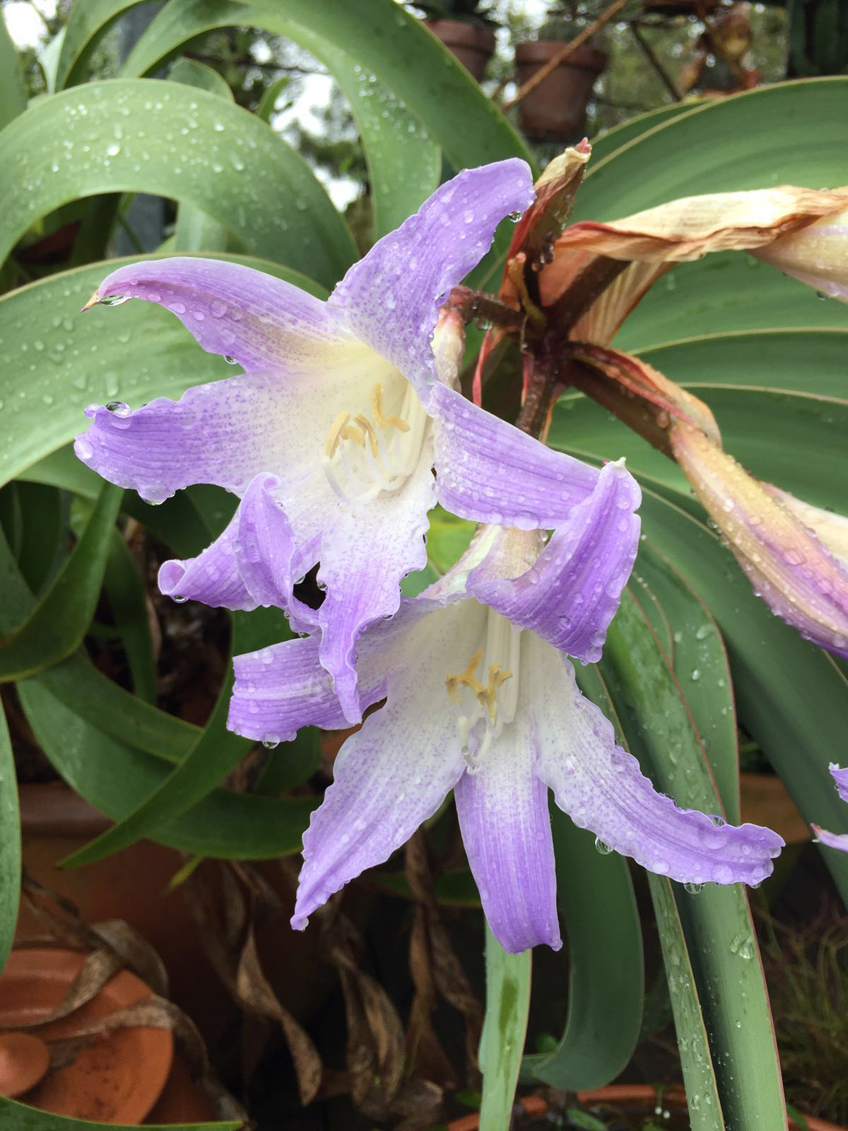
Photo - Graham Ross
The Royal Poinciana arrives in a heatwave.
She’s the Royal Poinciana, also gloatingly known as the Flamboyant Tree, Delonix regia, and nothing compares to this beauty in full summer
flowering glory. Yes even the glorious Jacaranda is half a point behind her in performance.
I believe, the finest Poinciana in this part of the world is in Marie Bailey’s home garden in her Pitcairn Settlers Village on Norfolk Island. Marie, a
6th generation descendant of Fletcher Christian, loves to tell stories under the sweeping boughs of this spectacular 120+ year old tree. When last
we chatted there she showed me a photograph of her Poinciana in full bloom, wow an absolute dream. She has propagated dozens from seed and planted
an avenue of them in her Queen Victoria Commemorative Garden in Queen Elizabeth Drive; yes Norfolk is a very loyal place.
When I saw my first flowering Poinciana in Sydney on the Northern Beaches in the 1990’s, it was only 2m tall and you could count the flowers. It was obviously
enjoying the warmth of Palm Beach. Advance forward to 2014 and when I commented to a listener on the 2GB Garden Clinic Show that I didn't recommend
Poinciana’s in Sydney I received a lovely email from Lucille and Peter Altona from Church Point complete with photo of their 15 year old Flamboyant
Tree in full flower for the first time. What a cracker! Lucille and Peter indicated they had in spring fed it with Sandra’s famous Magic Mulch which
I’m sure helped it along. No doubt a bit of global warming hasn't hurt it either. Over time it will get even better. Congratulations and by 2135 it
will look like Marie’s tree. Graham
The Poinciana tree here was spotted by listener Mark Wolff taken in Palm Beach.
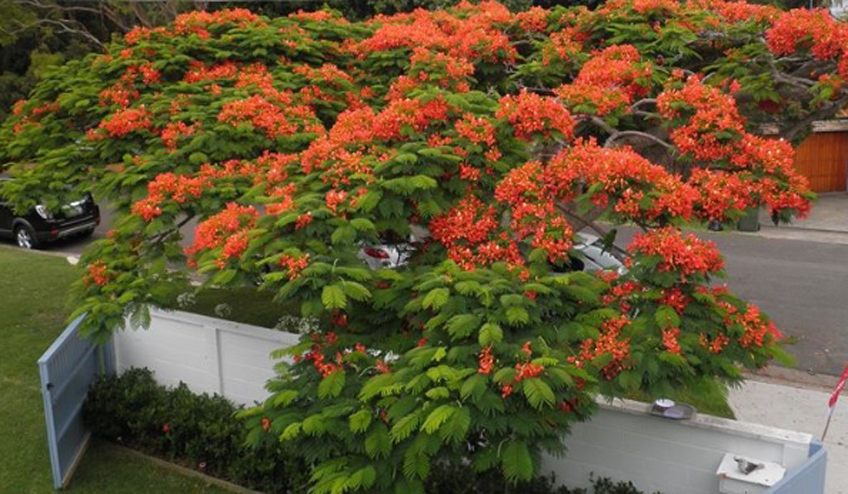
Poinciana in Sydney
Garden News
Have you heard about Patchwork ploughing? A South Australian farmer has created a huge geometric artwork to combat the effects of wind erosion on his fire
effected paddocks. Brian Fischer created patterns at Ashmore White Suffolk Stud, north pf Adelaide, following recent bush fires. In absence of any
vegetation, he says the furrows prevent gusting winds from causing further damage. ‘The fires cooked everything’ he said ‘but whichever way the wind
blows it’s always at 90 degrees to the furrows so it can’t get started. The idea dates back to 1944 or earlier when more than one million hectares
of land were destroyed by a raging bushfire in Victoria. Brian believes although it took several days to plough the patterns it will save him 15cm
of topsoil.
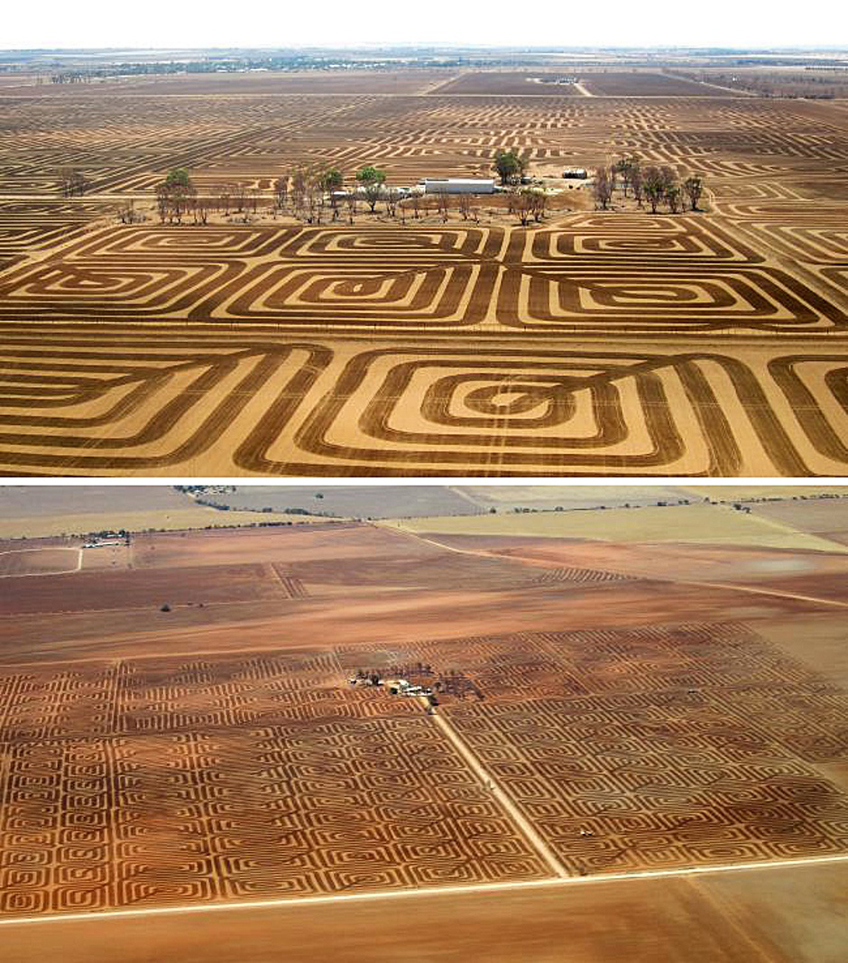
Patchwork ploughing in South Australia
Story via http://www.theguardian.com/environment/picture/2016/jan/20/patchwork-ploughing-australian-farmer-creates-huge-geometric-artwork-to-fight-soil-erosion